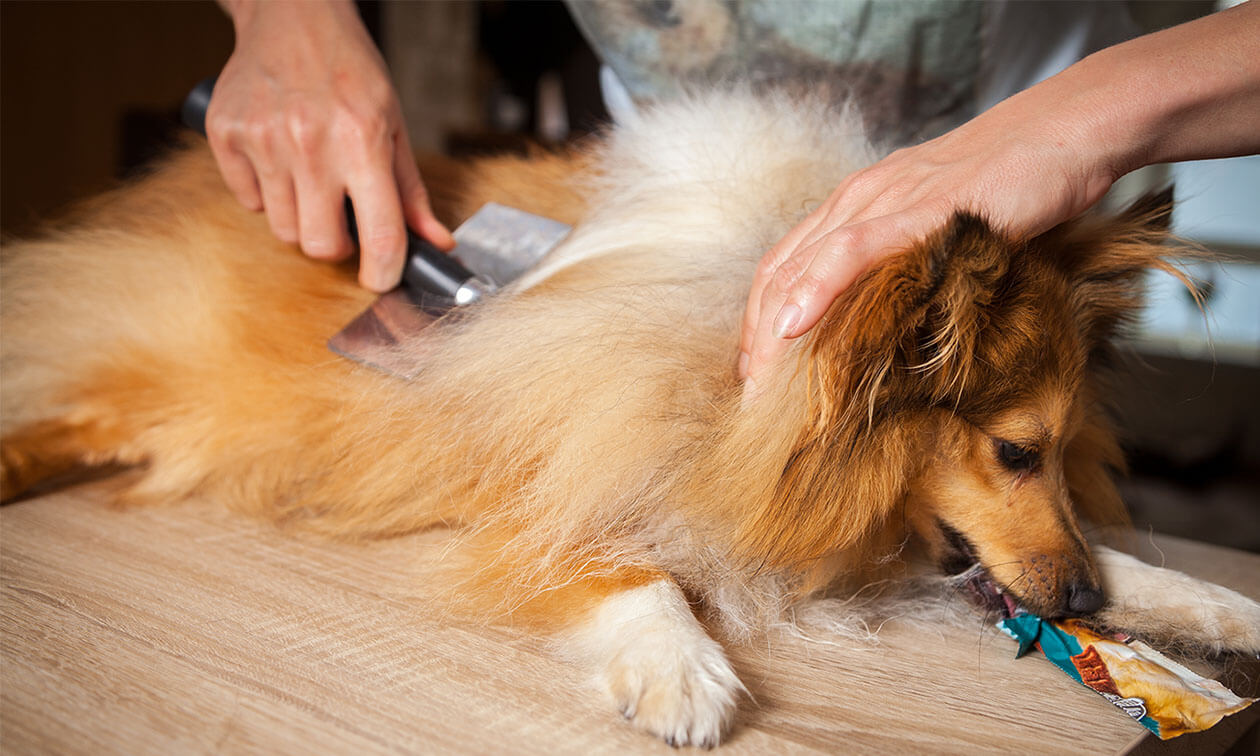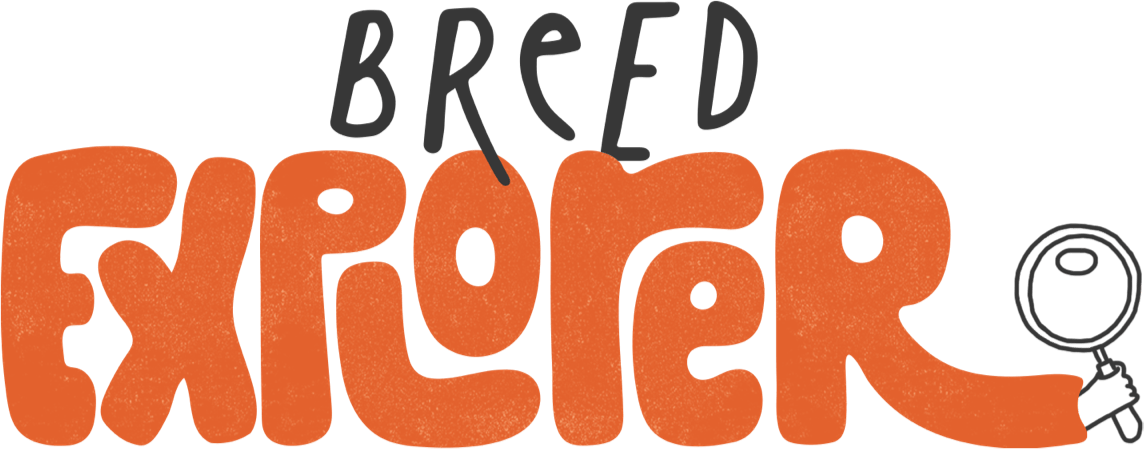Living with a dog who sheds a lot is an exercise in embracing the “fur glitter.” If your dog sheds a ton of fur on your floors, furniture, and clothes, there are things you can do. Let’s look at the best tips for living with a heavy-shedding dog and keeping that fur at bay.
Why is My Dog Shedding So Much?
Most dog breeds shed fur (and some more than others). Double-coated breeds with longer fur, such as Corgis, Alaskan Malamutes, Pomeranians, and Golden Retrievers, are considered the heaviest shedding breeds. Shorter coat breeds, such as Dalmatians, Boxers, and Chihuahuas, can also shed quite a bit of fur.
While dogs will shed fur year-round, you’ll notice that more fur tufts are floating around your home twice a year. This happens when dogs “blow coat” in preparation for a season change. Shedding will increase before winter as their coats thicken for colder temperatures, and again before summer, as they shed their heavier undercoat to prepare for warmer temperatures. There can also be medical causes of an increase in shedding. If you notice a change in your dog’s normal shedding, contact your veterinarian.
Regular Grooming for Shedding Dogs
If your dog sheds a lot, it’s best to brush them at least once daily, so less fur ends up throughout your home or on your clothes. Beyond controlling shedding, regular brushing ensures that their coat stays free of mats, maintains the needed airflow along their skin, and distributes naturally occurring oils throughout their fur.
Bathing your dog once a month can also help reduce the fur flying around your home. bathing your dog too frequently can strip them of natural oils.
If your dog’s excessive shedding is due to dry skin, try a de-shedding dog shampoo. These usually have moisturizing ingredients to help hydrate skin, which may alleviate heavy shedding. Hypoallergenic and aloe-based dog shampoos are another good choice for skin and coat hydration. Overall, looking for a detangling shampoo or conditioner over a “de-shedding” option is a good idea, as this will make brushing more effective.
Use a high-velocity grooming blow dryer (not a human blow dryer) before a bath or between baths to blow out excess fur. This is faster than brushing at removing excess fur and is better than blocking up your bathtub drain when that fur gets washed away during a bath. Just be sure to wear a mask and do this in an area where a fur tornado is manageable, such as the garage or outdoors, if the weather is nice. Most dog grooming salons with self-wash services have these blow dryers for customer use.
Use the Right Dog Shedding Tools & Products
Pick a brush with long enough bristles or comb teeth to reach your dog’s skin underneath the coat. This way, you can ensure you’re getting as much dead fur as possible with each brush stroke. Pin brushes or slicker brushes are a good choice for long-coated breeds. For short-coated dogs who shed a lot, a rubber curry brush can work wonders in loosening up dead fur. Follow the curry brush with a grooming glove or wipe to collect the fur and throw it away.
Be careful when using a de-shedding brush or comb, as these can cause damage to a dog’s coat when overused or misused. Avoid rakes or combs that may “cut” the fur, as this often damages the outer layer of your dog’s coat. Trimming their coat won’t reduce shedding; it just reduces the fur being shed.
How Nutrition and Supplements Impact Your Dog’s Skin and Coat
Proper nutrition is critical to a dog’s overall health and beneficial in reducing (though not eliminating) shedding. When dogs don’t receive essential nutrients, especially a high-quality protein source, it impacts their entire body, including their skin and coat. Additionally, dogs with food sensitivities or intolerances are prone to diet-related shedding. If you suspect your dog has a food intolerance, consult your veterinarian.
Supplementation with omega fatty acids or feeding a diet that is high in Omega 3 fatty acids can benefit a dog’s skin since it helps ease inflammation, reduce itchiness, lessen dandruff, and improve the general texture of the coat. All of this helps reduce shedding. It also helps to boost the immune system, which, when challenged, can cause increased shedding. There are also some diets specifically made for skin and coat health that can reduce shedding.
The Right Vacuum Can Help Manage Shedding Dog Fur
When it comes to vacuums for managing dog fur, you get what you pay for. Choose a vacuum with high suction power that’s easy to clean, as you will be pulling out chunks of fur regularly.
Robot vacuums can be a set-it-and-forget-it option, but they have smaller dirt collection trays. You will need to empty it regularly or invest in a self-emptying style. You may also need to help your dog acclimate to a robot vacuum, as many of these are stressful for noise-sensitive pets.
Removing Dog Fur From Furniture and Cloths
Invest in lint rollers and laundry aids. Even with regular brushing and vacuuming, fur will still float around — it’s just part of living with a heavy-shedding dog! Keep lint rollers handy to use on your clothes or furniture. Some rubber grooming brushes, and even rubber dishwashing gloves, also double as fur removers on furniture, clothing, or carpets.
To prevent fur build-up in your washer and dryer, use pet fur catchers that you toss in the machines with your load of laundry to dislodge and collect fur.
Should Your Dog Wear a Shedding “Suit”?
Shedding suits, or dog onesies, may seem like a perfect fix. Still, they can be extremely stressful or uncomfortable for a dog to wear. Many dogs do not enjoy wearing clothing, and these suits cover almost their entire body. They don’t actually stop shedding; the fur is simply trapped inside the suit. They can affect your dog’s ability to cool themselves, so if you use one, ensure it’s only on your dog for short periods.
ZPC-02535



